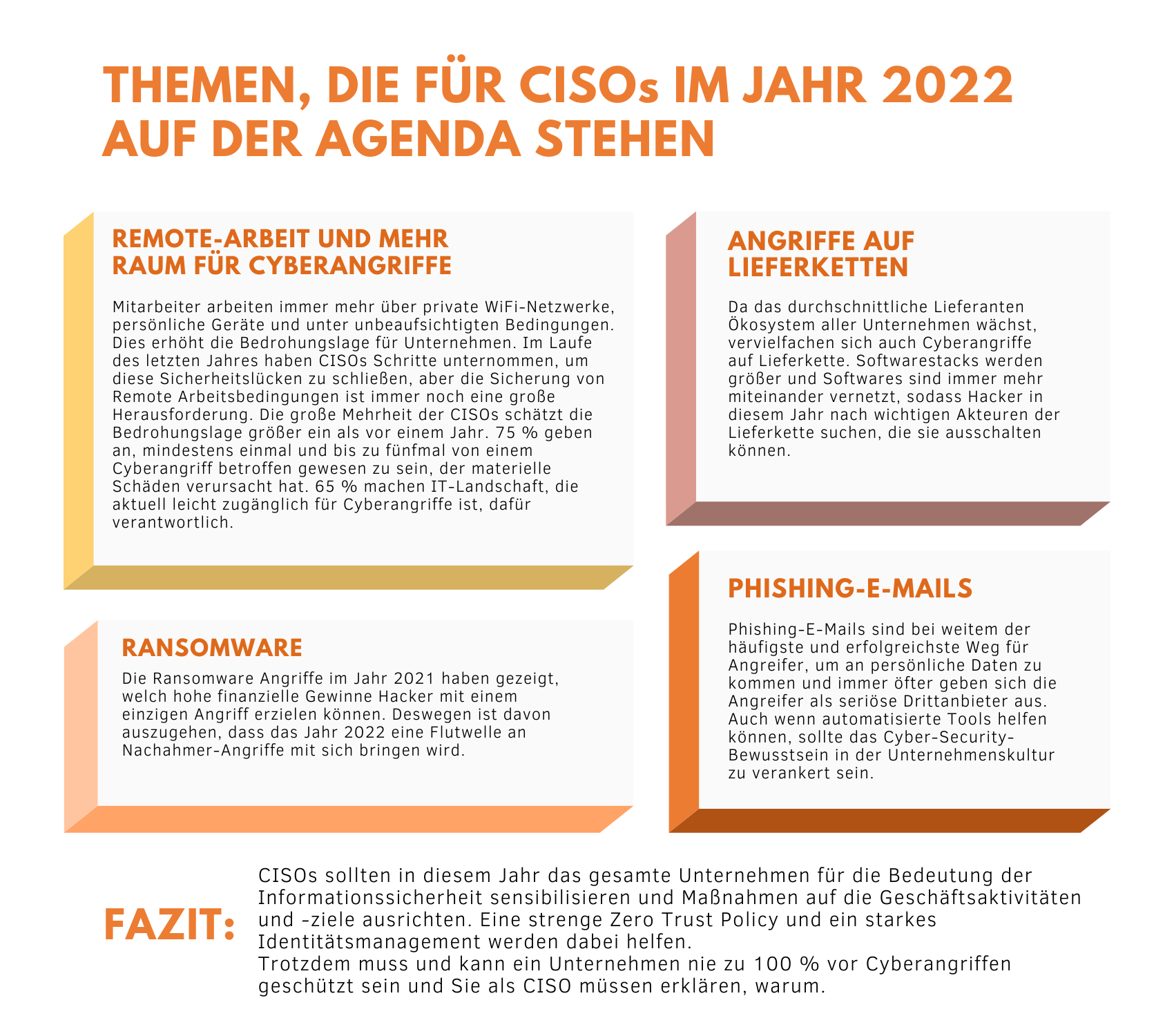Talk to us about your 2023 security roadmap.

Current cyber threats to watch out for
Ransomware
Ransomware attacks in 2021 (e.g., JBS and Colonial Pipeline) demonstrated the significant financial gains hackers can make with a single attack. As a result, we can expect a wave of copycat attacks in 2022.
Ransomware is the fastest growing attack strategy, where malware is used to deny a user or organisation access to their computer's files. By encrypting these files and demanding a ransom for the decryption key, cyber attackers put organisations in a situation where paying the ransom is the easiest and cheapest way to regain access to their files.
Supply chain attacks
According to a recent Survey2 of 1,200 security professionals across a range of industries, over 90% of organisations have suffered a security breach due to vulnerabilities in their supply chain.
As the average company's ecosystem of suppliers grows, it's not surprising that cyber attacks on supply chains are also multiplying. As software stacks grow larger and software components become more interconnected, this year hackers will target key players in the supply chain that they can disable. As the saying goes, a (supply) chain is only as strong as its weakest link.
Phishing E-Mails
Phishing emails are by far the most common and successful way for attackers to gain access to personal data, and attackers are increasingly posing as legitimate third parties. According to a recent estimate by the World Economic Forum3, 70% of salespeople still fall for phishing emails.
While automated tools can help, it's important to embed cybersecurity awareness into the culture of the organisation. Fortunately, the number of successful phishing attacks drops by a factor of nine when a company conducts regular phishing email drills.
Remote working and digitalisation
In 2022, millions of organisations will continue to adopt remote or hybrid working, and traditional network and endpoint security measures may no longer be sufficient. Employees are now working over private Wi-Fi networks, using personal devices and often in unsupervised conditions, increasing the threat landscape for organisations.
Over the past year, CISOs have taken steps to address these security gaps, but securing remote working remains a significant challenge. Robust identity and access management (IAM) is coming to the fore as a necessity in an organisation's security infrastructure.
With the rise of remote working and general digitisation, organisations in almost every industry are struggling to secure their applications. In 2021, Silent Breach2 found that 92% of web applications tested had serious or critical vulnerabilities. The attack surface for most organisations continues to grow rapidly, and CISOs must defend against cyber-attacks on multiple fronts: web, mobile, social, physical, wireless, cloud and more.
The vast majority of CISOs perceive the threat landscape to be larger than it was a year ago. 75 % report4, having suffered at least one cyber attack that caused material damage, with 65% blaming today's easily accessible IT landscape.
What's on the CISO's agenda in 2022?
CISOs should raise awareness of the importance of information security throughout the organisation and align it with business activities and objectives. However, only 12 % of CISOs1 manage to address all the tasks and challenges at hand.
A strong Zero Trust policy and robust identity management will help turn the tide. Organisations report that implementing or enhancing a Zero Trust model is their top security priority this year. Nearly 79 % of CISOs surveyed say4 they have already started implementing it, with a further 18% actively planning to do so.
At the same time, you need to improve the security of customer data by measuring the effectiveness of your security programmes. However, an organisation can never be 100% protected from cyber attacks, and as a CISO you need to explain why. An organisation must ensure that its critical assets and data are protected as much as possible. If the most critical assets are protected against the most likely threats, then you are on the safe side. Organisations should not waste money closing vulnerabilities that have no real impact.
To help organisations better understand their level of protection, CISOs also need to be able to quantify the risk of cyber-attacks in euros. This means working out how much it would cost to respond to and recover from a specific breach, and multiplying that by the likelihood of such a breach.
There are some measures you can start with, such as regular communication with executives outside the company's IT department, as everyone in the organisation has an impact on the effectiveness of security measures. Business decision-makers need to be informed about new security standards and technologies, and it's your job to make them aware of future risks. In addition, you should develop automation strategies that will speed up, simplify or even eliminate the response to cyber attacks.
The final, and perhaps most important, IT security measure is to expand or improve the skills of your team. Talent in this area is scarce and expensive, and while cyber managed services often fill the gaps, external partners can introduce new risks without careful oversight. Strengthening the skills of your cybersecurity team can give your organisation a competitive advantage.
#CyberSercurity #CISO

Sprechen Sie mit uns über ihre Security Roadmap im 2023



